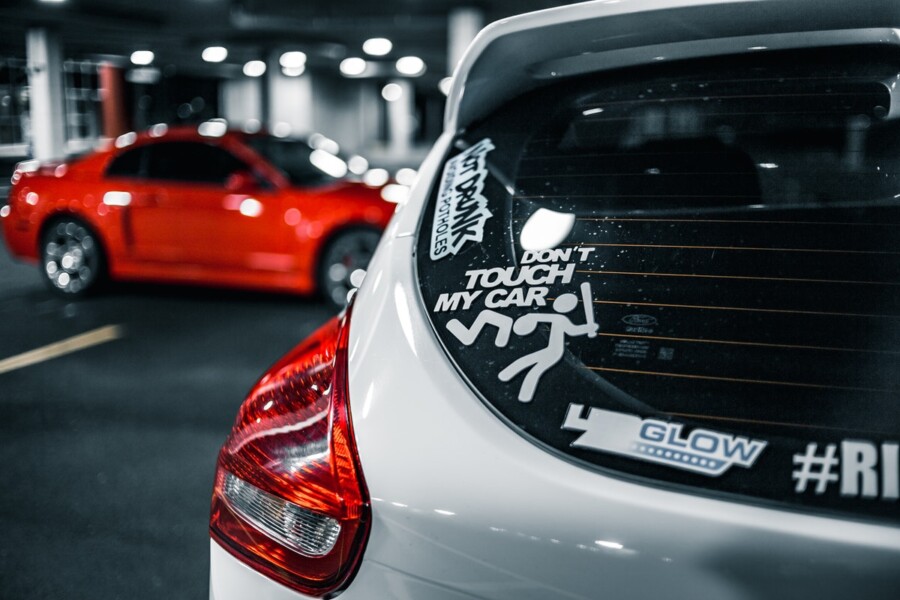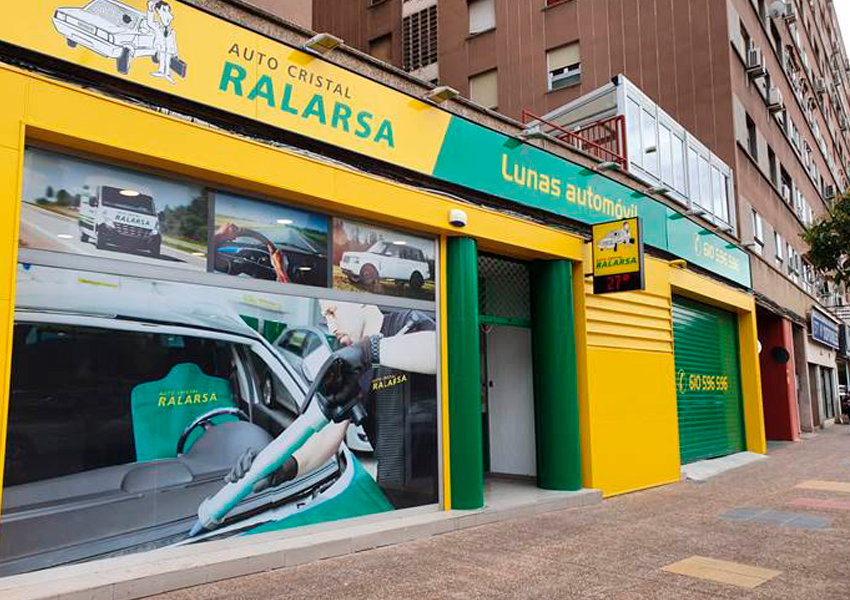If you are thinking of personalising your car to distinguish it from other vehicles, placing stickers is one of the simplest, quickest, and most economical options. However, when using stickers on car windows, it is necessary to take into account certain regulations established by the General Traffic Regulations.
At Ralarsa, an automobile glass workshop specialising in the replacement and repair of car windows, we explain all the details about driving with stickers on the windscreen. Read on and find out everything with Ralarsa!
Can stickers be used on car windows?
The General Traffic Regulations allow stickers to be placed on your vehicle, provided that the glass surface of the car allows optimal visibility for the driver on the road at all times and there is no interference from stickers or films.
Considering that eyesight provides 90% of the information needed during driving, at the Ralarsa glass repair workshop we highlight the importance of complying with this rule to maximise the safety of all occupants and avoid possible incidents at the wheel.
Which stickers are permitted?
As mentioned above, it is possible to place stickers on your vehicle’s bodywork that do not affect the driver’s clear visibility, except for certain types of stickers mentioned at the end of this article. Among the most notable stickers are:
- ITV inspection sticker. The Vehicle Technical Inspection (ITV) sticker is mandatory and, from the driver’s perspective inside the car, must be placed in the upper right‑hand corner of the windscreen, as this is the area least affecting visibility. Not carrying this sticker is punishable by a fine of between €80 and €100. Only the sticker from the latest inspection is permitted, a measure adopted to prevent accumulation of stickers from previous years on car windows.
- DGT environmental label. Currently, vehicles are issued an environmental badge by the DGT, classifying them according to pollutant emissions. Although its use is not yet mandatory, it is recommended in certain municipalities. The environmental sticker should be placed in the lower right‑hand corner of the windscreen or, if unavailable, in any visible part of the vehicle.
Electronic toll device. Whether a sticker or a device, the toll system must be placed inside the vehicle in the upper central part of the windscreen, thereby avoiding interference with driver visibility. - New driver “L” sticker. The new driver sticker is mandatory during the first year after obtaining your licence. It must be placed on the rear left of the vehicle to be visible to other road users. Not displaying it during the first year, or keeping it beyond that period, is punishable by a €100 fine.
- National identifiers. This sticker is intended for vehicles registered before 1998, which do not have the European format. As placing stickers on the number plate is punishable by a €200 fine, the identifier must be placed next to it to avoid obstructing full visibility of the plate.
Stickers prohibited by the DGT on vehicles
At Ralarsa, an automobile glass workshop specialising in car window tinting, we detail which stickers are not permitted on your vehicle:
- Reflective stickers. According to the DGT, these can affect the visibility of other road users. Therefore, reflective paints are also prohibited on cars, except for vehicles expressly permitted under the General Traffic Regulations.
- Competition stickers. The DGT considers that stickers associated with sporting events may alter other users’ driving behaviour and encourage exceeding established speed limits.
Do you need a windscreen repair? At Ralarsa we offer a wide range of services related to maintaining your vehicle’s structural safety. Visit our website to discover our wide catalogue of services, such as ozone treatment, headlight polishing, or car window tinting. Visit your nearest automobile glass workshop Ralarsa!





